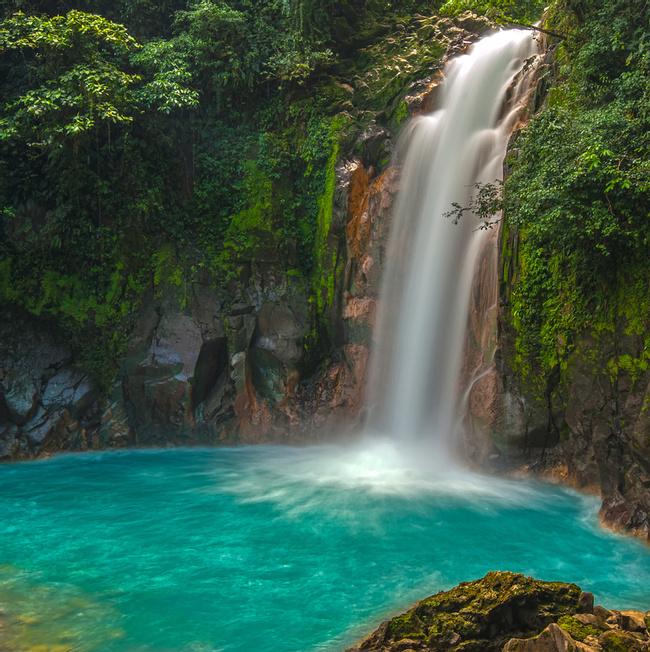Education in Costa Rica
Walk down the street of any Costa Rican town and you’re likely to come across groups of schoolchildren in tidy blue and white uniforms. The students might be as young as six or as old as eighteen. They might be boys or girls, affable and engaging or quiet and reclusive. Despite their variance, all of these children have one thing in common: they are receiving a free, comprehensive and state-funded education.

As a pioneer country in sustainability, Costa Rica’s leaders understand well that the actions of today have huge impacts on the future. In environmental terms, that means protecting natural resources so that they are of continued benefit to the country. Costa Rica adopts a similar approach to education. By realizing the importance of providing children with a solid education, the country is investing in its future scientists, businessmen, and government leaders. The idea is simple — if you want to have a strong society in the future, pour your efforts into education now.
Video: Schools & Education in Costa Rica

To this extent, education is taken seriously in Costa Rica — in fact, the country has one of the best school systems in Central or South America. Most students graduate high school and speak English, and the literacy rate is 95 percent for everyone over the age of 15. Indeed, Costa Rica’s emphasis on providing free, universal education is easy to see in its English-speaking, globally-minded citizens.
Costa Rica’s schools have a simple goal: to create a well-educated populace that will one day improve their national (and even global) lot. It’s not about individualism and getting ahead. It’s about equipping students with the skills to succeed and make real improvements in the lives of the rest of humanity. Take a minute to talk with the kids in Costa Rica and they’re likely to tell you how the stuff they’re learning will be of real use in the future. They might relate the importance of protecting natural resources (such as for medical uses) or becoming computer literate (to help spread information). It is this symbiotic approach to learning that defines Costa Rica’s educational system.
Costa Rica’s educational emphasis dates back to 1869, when education was made free and mandatory for all citizens — in fact, Costa Rica was the first country in Central America to do so. After Costa Rica’s army was disbanded in 1948, money was increasingly poured into education. Since the 1970s some 30 percent of the country’s national budget has been invested in education, and nowadays there are more teachers than policemen. How’s that for priorities?
Primary education is compulsory for children ages 6 to 13 and lasts six years. Secondary education is voluntary and lasts five to six years. During a child’s time at secondary school, the first three years are set aside for general education, while the remaining two to three years are for specialized training. Upon completion of high school, students receive a high school diploma that qualifies them for a university. Costa Rica didn’t have any universities until 1940, but now there are four state-funded universities and many private universities.
Despite the country’s emphasis on education, it’s somewhat common for children in rural areas to not continue school past the 6th grade — this because these children often stay at home to work their parents’ farms. Thus, in rural communities the government tries to keep education afloat by equipping every municipality with a library.
Today, the Costa Rican education system has grown to over 4,000 schools. In addition to public schools, there are private schools scattered across the country. Some private schools offer courses in other languages and may follow a U.S.-styled curriculum. Degrees from these schools include a U.S. High School Diploma, accredited by the Southern Association of Colleges and Schools (SACS), and the International Baccalaureate Diploma, accredited by the IBO in Switzerland.
Costa Rica’s education system observes national and religious holidays and closes school on these days. One of the most widely observed holidays is Semana Santa, which occurs one week prior to Easter. Christmas, New Years, and Independence Day are other important holidays.
While traveling in Costa Rica, the national emphasis on education becomes obvious. The locals are healthy, engaging, and usually speak English — they might talk to you about topics ranging from environmental awareness to global politics, or else share interesting tidbits of national history. The country’s environmental awareness is a further indication of its strong education system, as more than 93 percent of the country’s energy is produced using renewable sources. Few countries can make that claim.
Video: Costa Rica Sustainable Practices

As Costa Rica moves into the 21st century, its commitment to providing free and compulsory education will greatly help its development. As more students continue on to university, the nation will become a trendsetter not only in Central America but in the wider world as well. Remember that as you walk down the streets of Costa Rica and pass groups of students wearing those tidy blue and white uniforms.
Environment
We believe travel is more than ticking destinations off a list – it’s about discovering new places deeply, feeling connected wherever you go, and knowing you have a trusted team behind you every step of the way.



